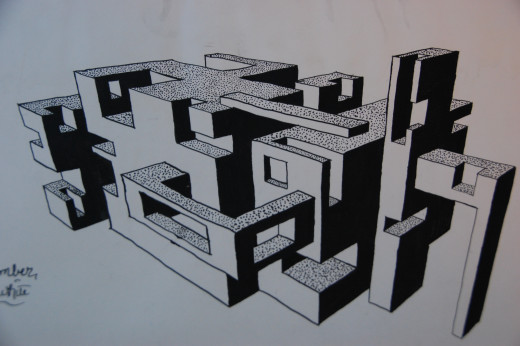Pencil Drawing Exercises




There are many different ways to draw and shade with a pencil. You can use hard or soft lead pencils or colored pencils. I tend to use a medium soft lead, I like the way they blend the best. There are many different levels of pencil lead in art supplies to choose from. These are rated 9H (hardest and lightest in color, with more clay) through 9B (softest and blackest in color, with more lead). You can find an example of the scale easily online and see examples of the leads. The middle pencil grade is HB. If you are doing a picture with sharp edges, a harder lead would work best for you.
There are three basic types of shading with pencils. The first is blended shading, which most people use when they start drawing. Another type of shading is cross-hatching, which means using layers of lines in different directions to shade an object. This works very well with harder leaded pencils that allow you to see the lines sharply. It also works great with ink or markers. There is also a third type of shading called stippling. This method uses a series of dots marked on the paper in various closeness to make shadows darker or lighter. The more dots in a small space, the darker the shading and vice versa. Using a directed light on an object in the beginning makes it easy to see the lightness and darkness of the object.
In the classroom, I have sheets with objects already drawn on them in outline for the students. Then they don't need to worry about making a perfect square, triangle or circle. They can concentrate on the actual shading. As the students get older, I would have them draw the shape itself onto the paper and then shade it. You must always remember to try to keep a fairly light hand when shading an object. You can always make it darker with more pressure, lines or dots, but it is not always easy to make things lighter. A good eraser is a worthwhile investment, usually I have a white plastic eraser on hand for my pencil work. The theory of keeping a light hand rings especially true with markers and ink. You cannot just erase ink. This is something that each student needs to think about and be taught to remember. Generally, they try to shade with too heavy of a hand at first and have a hard time keeping the light area light enough. It takes some practice to get it right.
Once the students (or yourself) have mastered shading certain shapes, they can try their hand at a still life. The most important thing to remember when drawing is that each object is made up of simple shapes. Combining shapes is the basis for every object drawn. In other words, everything is based on a simple shape, you just build off of that shape with additional lines to make an individual realistic object. Breaking everything down to a simple shape makes drawing everything easier. It is probably the best piece of advice I can give. Hopefully, you will be able to use a couple of these techniques in your drawing or teaching and find some of the information helpful!









